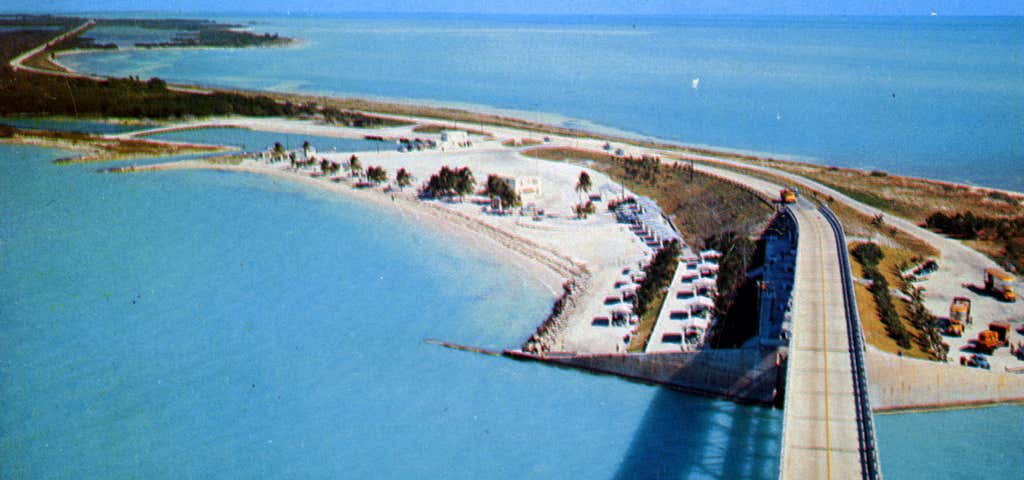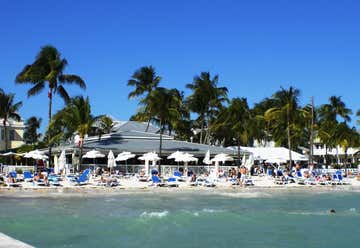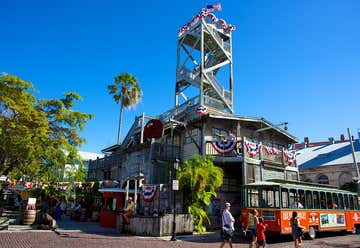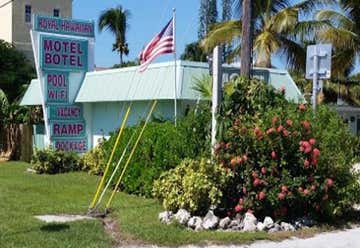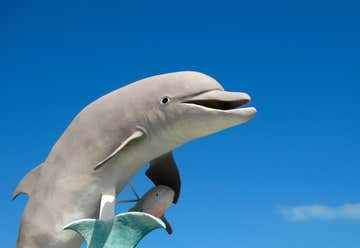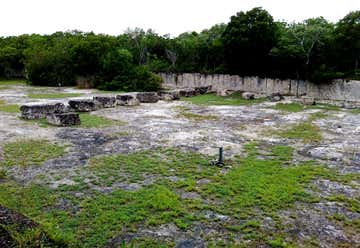The Overseas Highway is a 120-mile drive that connects the Florida Keys via a series of amazing bridges and causeways. Originally built for the Florida East Coast Railway, , the route today is lined with seafood restaurants, amazing dive bars, incredible roadside attractions, and places to dip your toes in the water.
Bahia Honda State Park takes up most of Bahia Honda Key, and it's the perfect place to hop on the Overseas Highway. The island features two and a half miles of white sand beach, a tidal lagoon, and a deep natural channel for kayaking, swimming, and snorkeling (gear can be rented at the park!) There are paved trails for hiking and biking, and there's even a great little Sand and Sea Nature Center, where you can learn about everything from sea sponges to sea turtles. Photographers are especially fond of the Old Railroad Bridge (the one with the gap in it), as it makes for some really cool photo ops. Plus, the key is at the western end of the notoriously long Seven Mile Bridge, so it's a great place to unwind after the intense drive across.
South Beach is one of Key West's best sandy shores, thanks to its location right at the end of the island's main drag, Duval Street. That means that if you find yourself in need of more sunblock or a towel, or even a cold drink, you're only a few blocks away from a store or bar. Plus, the white sand, free public access, and awesome people-watching don't hurt either!
Unbelievably fresh seafood, delicious cocktails, and oceanfront seating make the Southernmost Beach Cafe the perfect place for pre-dinner drinks and apps or a relaxing meal. Enjoy shrimp and grits or fish tacos and the ocean breezes. If you don't like seafood, don't worry. They offer tons of other tasty options as well.
Key West has a really unique history: For a period in the mid-19th century, Key West had the wealthiest population per capita thanks to shipwreck salvagers! Learn about the island's past in an equally unique way at the Shipwreck Historeum. Artifacts from sunken ships, videos of divers exploring wrecks, and historical re-enactors tell the island's maritime history.
Ernest Hemingway, Truman Capote, Shel Silverstein, Tennessee Williams and even Jimmy Buffet have all enjoyed a drink (or 10) at Captain Tony's Saloon in Key West, Florida. Its notorious history as a morgue, cigar factory, and speakeasy gives it an authentically Key West atmosphere, and it's a great place to enjoy a few rum-laden drinks and mingle with the locals.
B.O.'s Fish Wagon is the perfect seafood shack. The funky, dive-y decor and delicious grub make this a must-visit. Local specialties such as conch, grouper and mahi-mahi are served in ceviche and tacos, and on sandwiches, or "seawiches", as they call them. Wash it all down with a cold beer or a Key Limeade as you unwind at a picnic table.
Away from the beach, in nearby Big Pine Key, you'll find the Blue Hole, a freshwater lake that used to be an old rock quarry. Alligators, turtles, iguanas, deer, and more call this Key home, and a hike around here is the perfect way to get some sightseeing in!
Relax by the pool, fish from the dock, or nap away the afternoon heat in your room at the Royal Hawaiian Motel/Botel. "What's a botel?" you might ask. If you’re lucky enough to have a boat, the Royal Hawaiian has several rooms that provide dockage right outside and killer views of the water. Imagine watching the sun set over the ocean as you cook up your catch of the day on the grill!
The Dolphin Research Center is a facility dedicated to studying and protecting marine life, especially dolphins. Back in the day, it was actually a porpoise training center where Mitzi, the porpoise star of the 1960s TV show "Flipper" was trained. You can find a memorial to her here, as well as a dolphin theater, a garden, and an aquatic playground. You even get an opportunity to swim with dolphins!
The Windley Key Fossil Reef is an old quarry that offers visitors a rare opportunity: the chance to see fossilized coral from thousands of years ago! There's no better place to learn how the Florida Keys were formed. Plus the ability to see old mining equipment tells the story of the more recent past. There are several self-guided trails here, each offering different views.
If you're a trained scuba diver, then the Christ of the Deep is a must-visit. The statue in Florida isn't the only Christ of the Deep-- it isn't even the original! In 1954, Italian diver Duilio Marcante had the idea to cast a bronze statue of Jesus to place in the water near where Dario Gonzatti, the first Italian to use scuba gear, died. In 1962, the Underwater Society of America was given a Christ of the Deep as well. It was on display at Chicago's Navy Pier for a little bit, and then it was sent to Florida to be sunk in the reef. You can spot it while snorkeling in the reef, or scuba dive down to see it up close. Just make sure not to touch it; you can seriously hurt the fragile coral that the statue supports. Otherwise, enjoy snorkeling through the holy waters!
John Pennekamp State Park was the first underwater state park in America, and it's not hard to see why. Coral, turtles, fish, mangrove trees, and tons more call this unique habitat home— plus there's an old Spanish shipwreck to explore. Take a glass-bottom boat tour, rent snorkel or scuba gear, and even camp out on the shore!
As you drive the Overseas Highway through the Keys, you'll find yourself slipping into vacation mode. The incredible beachy views, delicious seafood, and refreshing tropical drinks definitely make this paradise difficult to leave behind!
